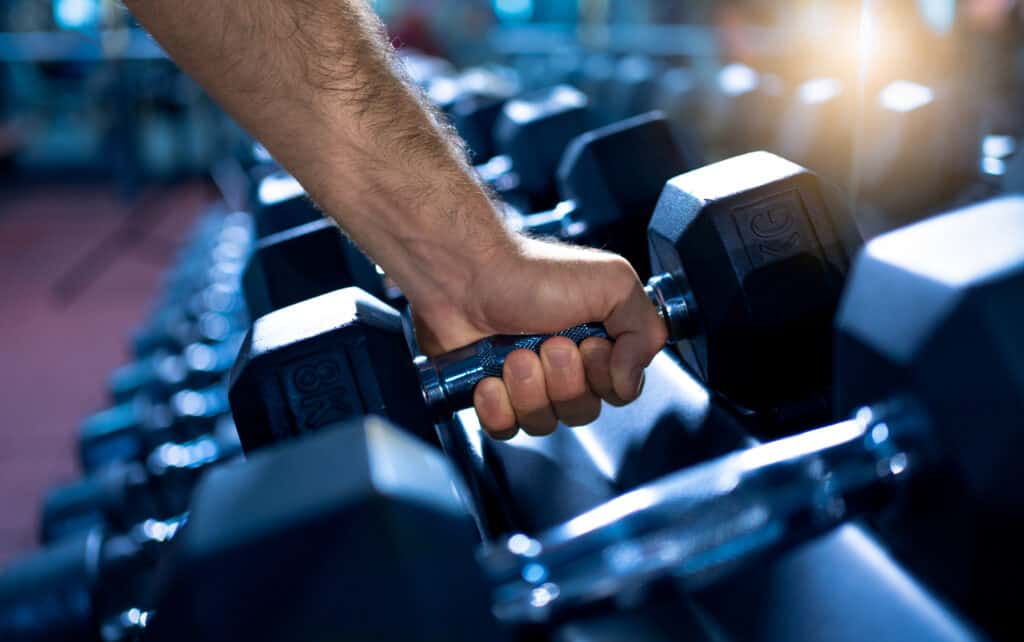Research has demonstrated that grip strength can actually predict not only overall health but also all-cause mortality. The definition of all-cause mortality is the death rate from all causes of death for a population in a given time period.
Grip strength is extremely important in the world of working out. It’s needed for every type of exercise, from Olympic lifts to a pull-ups. Adequate grip strength is also needed to get things done around the house. The impact it has on health coupled with valued importance in the gym, makes you wonder why more don’t work on improving it?
Hopefully after reading some of the research presented here, your mindset changes. Most people are not aware of the real value of grip strength, and its importance on overall health. Remember, the old saying, if your grip goes…you go!
Research on Grip Strength
Grip strength is a powerful indicator of upper body strength. Hand strength typically peaks around 30-40 years of age according to one study. There are also gender differences between men and women when measuring grip strength. Hand strength begins to decline in men and women around 50-55 years of age. Low grip strength is associated with a greater likelihood of premature mortality, according to researchers like Bohannon.
Gray and colleagues, in a 2018 study, found hand strength was “strongly associated with a wide range of adverse health outcomes.” Their research concluded lower grip strength was associated with a plethora of health issues. Including, a higher incidence of cardiovascular disease, chronic obstructive pulmonary disease and various types of cancer.
A meta-analysis of 42 research papers, and three million participants, found a linear relationship between grip strength and all-cause mortality. In a second study study, handgrip strength was shown to have predictive validity for decline. Specifically, a decline associated with cognition, mobility, and functional ability in older individuals.
Using data from the KNHANES 2015–2016 study, Chong and colleagues looked the association between absolute and relative grip strengths and cardiometabolic outcomes in a Korean adult population stratified by sex and age. Their study suggests that grip strength may be a reliable index to screen for cardiometabolic disease. Thus, grip strength is a biomarker of healthy aging for people of all ages. Finally, it may also be an effective screening tool for various diseases.
How Do You Test and Improve Grip Strength?
One of the best ways to test for grip and arm strength is with a hand dynamometer. The following products are just a few of the many ways to strengthen your grip. One other such example is this unique grip product from Sorinex, that I recently tried and posted video on Jefit Instagram.
Exercises to Improve Grip Strength
As mentioned previously, any exercise that require holding a barbell or dumbbell will develop hand and arm strength to some extent. There are certain exercises, however, that are better than others when looking to become stronger in this area. The first exercise that comes to mind is loaded carry. This is where you walk with either dumbbells, kettlebells, Hex bar or plates in each hand for time or a specific distance. A suitcase carry is where you load only one side of the body like carrying a suitcase. Here are just a few of the many great exercises you can try:
Stay Strong Together
Join more than 10 million members who have had great success using the Jefit app. The award-winning Jefit app comes equipped with a customizable workout planner, training log, the ability to track data and share workouts with friends. Take advantage of Jefit’s huge exercise database for your strength workouts. Visit our members-only Facebook group. Connect with like-minded people, share tips, and advice to help get closer to reaching your fitness goals. Stay strong with Jefit.
- Boost Your Posterior Strength with 3 Effective Jefit Exercises - March 31, 2025
- 8 Underrated Stretches to Improve Your Deadlift Performance - March 28, 2025
- Strength vs. Hypertrophy: Best Way to Train for Your Goals - March 26, 2025
